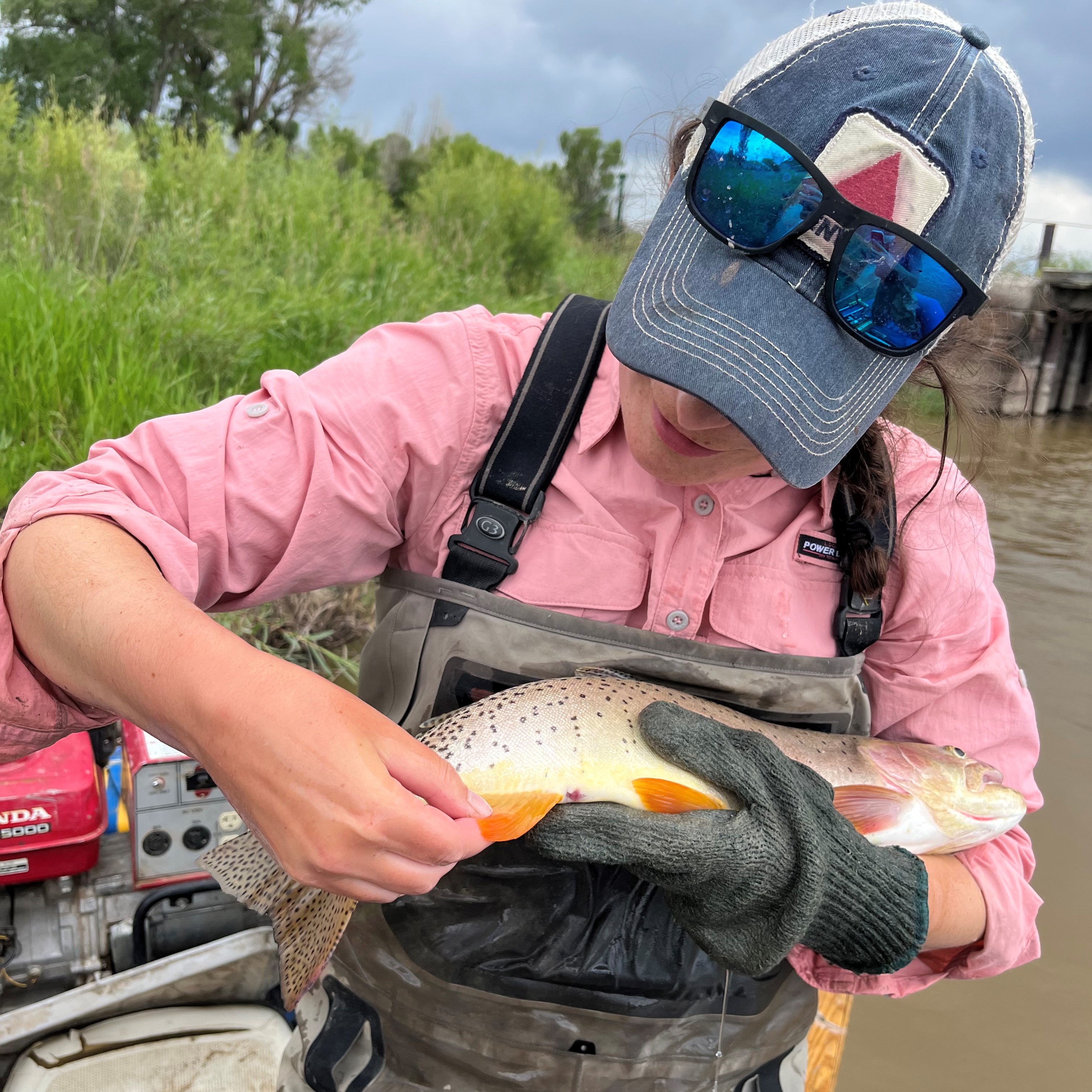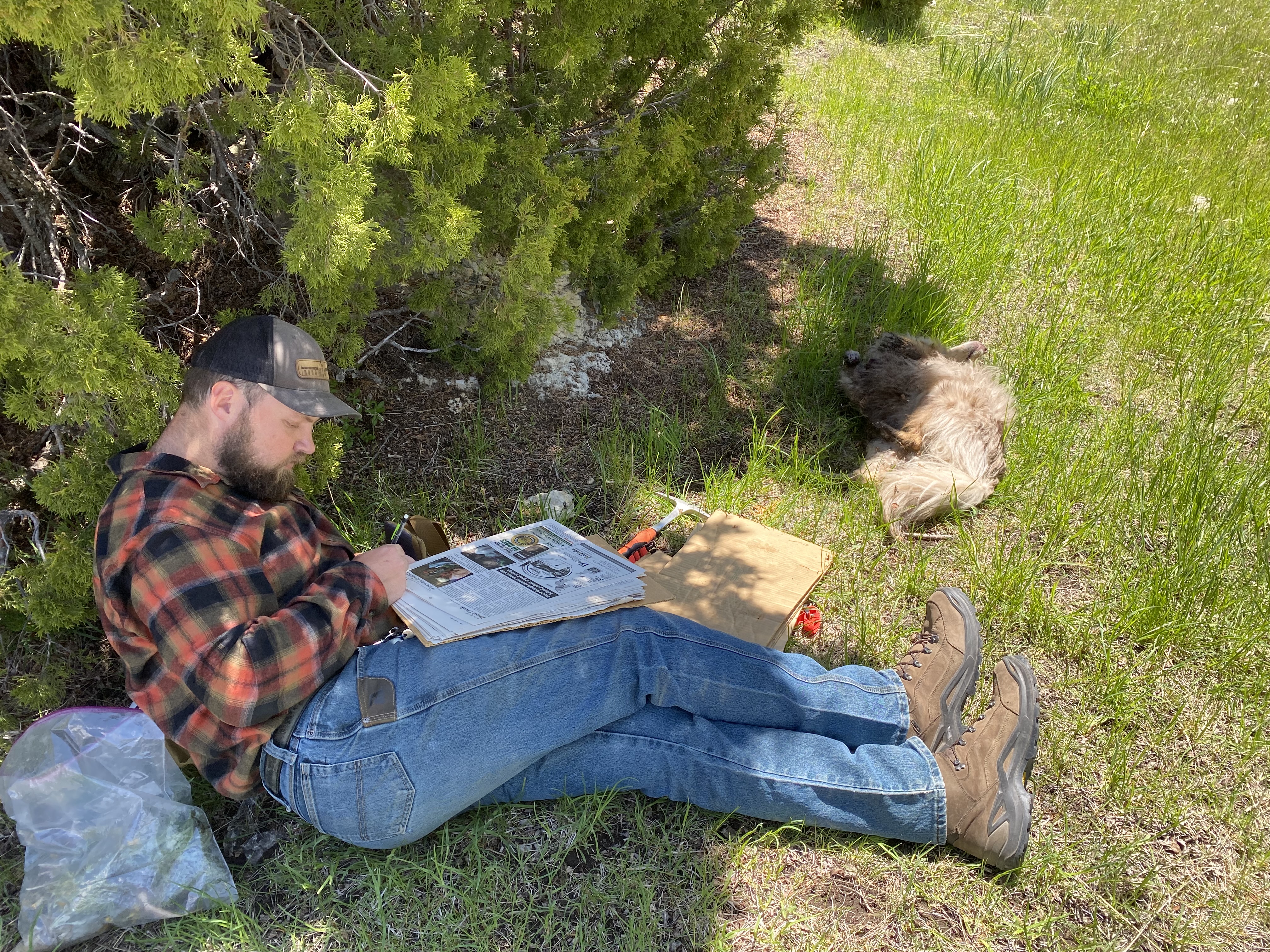Katherine Gura - Mechanisms driving variation in seasonal movements and demography of an irruptive, facultative migrant
Katherine Gura
Biodiversity Graduate Student Research Enhancement Grant Awardee
Department of Zoology and Physiology
Graduate Advisor: Dr. Anna Chalfoun
Introduction

Background and Rationale
Irruptive, facultative migrant species tend to exhibit low site-fidelity, erratic movement patterns, and high variation in annual demographic rates as they track pulsed, unpredictable resources across space and time (Robillard 2016; Therrien 2014; Newton 2012, 2006). However, different populations within a species can vary in the extent to which they exhibit irruptive, facultative behavior, and the contexts under which it occurs as well as its implications are relatively unstudied (Newton 2012). In general, research on avian facultative migrants is limited, often focusing solely on extreme, irruptive events, during which large numbers of individuals migrate beyond their normal range in response to shifts in resources or environmental conditions (Curk 2018, Robillard 2016, Graves 2012, Newton 2006). A major hurdle to understanding irruptive, facultative behavior is the difficulty of conducting long-term studies that simultaneously track individuals, key resource availability and demographic rates over large spatial areas. For similar reasons, management of these species and their associated communities is inherently challenging, requiring long-term monitoring to identify population-level trends versus annual shifts in productivity, survival, or movements. However, multi-year evaluations of irruptive, facultative species are essential for understanding population stability and community dynamics. As shifts in resource availability influence the demography and behavior of certain species, the subsequent effects on trophic cascades can lead to community-level impacts that reverberate through entire ecosystems (Clotfelter et al. 2007). Likewise, this research is particularly critical in light of changing climatic regimes that can influence selective pressures such as food availability and physiological constraints. As examples of pulsed or variable resources exist across virtually all ecosystems (Yang et al. 2008) and changing climate can impact even traditionally stable communities, this work can improve understanding of how ecological systems may respond to less predictable resources in the future. The Great Gray Owl is an ideal study species for addressing these research needs for several reasons. This iconic forest raptor is a species of conservation concern throughout much of its range, its habitat associations and movement patterns are poorly understood, and demographic studies on this species are rare. In our study area in northwestern Wyoming, the Great Gray Owl is a state-sensitive species that exhibits extreme variation in annual productivity, seasonal movement patterns, and winter range. The Great Gray Owl has a unique foraging method that may make it sensitive to changing climate. In the winter, it hunts for small mammals below the snow, penetrating as far as two feet to capture prey. Because Wyoming nears the southern extent of this species’ range, our study population may be especially susceptible to varying climatic conditions. Finally, the Great Gray Owl’s role as an apex predator means that mechanisms that influence its behavior and demography most likely impact lower trophic levels as well. Importantly, ecosystem-level conservation strategies are often based on the ecology of apex predators such as raptors, as these management plans can provide broader benefits to biodiversity compared to ones based on lower trophic levels (Sergio et al. 2006).
Share This Page

Examining the wing of a great gray owl.
Research Highlights






